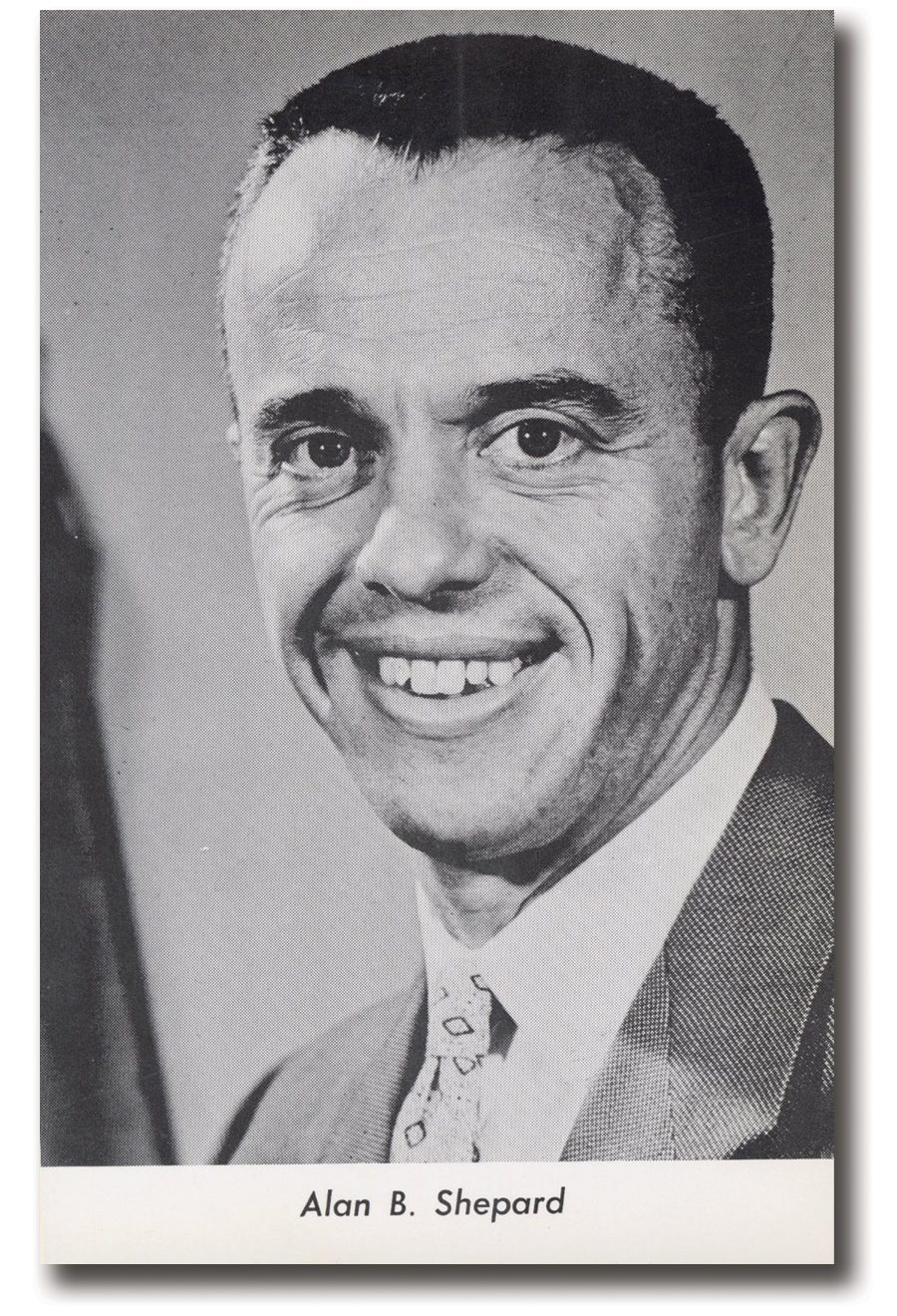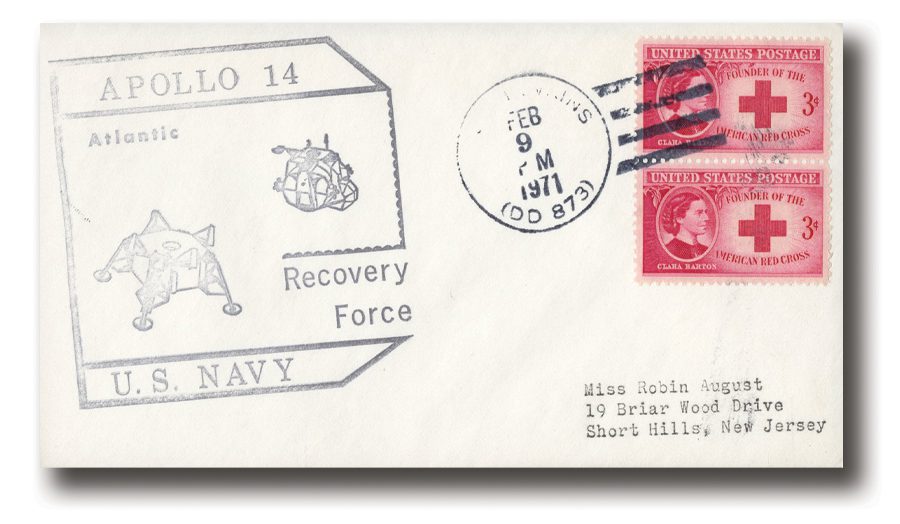Alan Bartlett Shepard Jr. was born on November 18, 1923, in Derry, New Hampshire. He was the first American (second person after Yuri Gagarin) to travel into space and the fifth person to walk on the Moon.
A descendant of Mayflower passenger Richard Warren, Shepard performed well in school, skipping the sixth and eighth grades. While attending the Pinkerton Academy, he became interested in flight and founded the school’s model airplane club. In 1938, he got to fly in a Douglas DC-3 as a Christmas present. After that, he regularly visited the Manchester Airfield offering to do odd jobs for the occasional plane ride or flying lesson.
Shepard went on to attend the US Naval Academy where he enjoyed aquatic sports and yachting. He graduated in June 1944 and was posted to the destroyer USS Cogswell as a gunnery officer. He served at Okinawa where the ship was a radar picket, warning the fleet of incoming enemy planes. Shepard was also aboard the ship when it conducted naval bombardments of Japan and witnessed the Japanese surrender. Shepard earned his naval aviator wings after the war and spent the next several years aboard various ships and participating in test flights, of planes and jets. By 1957, he was an Aircraft Readiness Officer with over 3,600 hours flying time, which included 1,700 hours in jets.
In October 1957, the Soviet Union launched Sputnik 1, the first artificial satellite into space. This led to the start of the Space Race, the founding of NASA, and Project Mercury, America’s first manned space program. Shepard was one of several hundred candidates considered for Project Mercury and was announced as the first American to go into space on January 19, 1961. The flight was originally scheduled for April 26, 1960, but was postponed several times. As a result, Soviet Cosmonaut Yuri Gagarin became the first human in space on April 12, 1961. Shepard was angry the Soviets had beat America to space, but carried on with his mission.
On the morning of May 5, 1961, an estimated 45 million Americans watched as Shepard’s craft, Freedom 7, lifted off at 9:34 a.m. Within minutes, the craft left Earth’s atmosphere, making Alan Shepard the first American to reach space. The Freedom 7 spent 15 minutes, 28 seconds in flight, reaching an altitude of 116.5 miles. Shepard’s mission in that short time was to demonstrate control of a vehicle during weightlessness and high G stresses. He traveled 302 miles at a speed of 5,100 miles per hour. Both spacecraft and astronaut were recovered in excellent condition. While Gagarin had merely been a passenger, Shepard controlled Freedom 7, and maneuvered it to a near-perfect landing. Shepard became a national hero, honored with three ticker-tape parades, a telephone call from the president, and a NASA Distinguished Service Medal.
The following year, Shepard was capsule commander for John Glenn’s Mercury-Atlas 6 orbit of the Earth, a mission he’d also been considered for. At a post-Mercury 3 press conference, Glenn joked that Shepard was the “missing link between man and ape,” as his flight had occurred between that of Enos the chimpanzee and Glenn’s orbital flight. Shepard was slated to pilot the Mercury-Atlas 10 three-day mission, but it was scrapped as NASA believed they had accomplished all the goals of the Mercury program.
Shepard was then selected to command the first crewed Gemini mission; however, he began to experience dizziness, nausea, and strange sounds in his ear, which was diagnosed as Ménière’s disease. While there was no cure, doctors attempted to treat it as it could go away. Shepard was replaced on the Gemini mission and was then made Chief of the Astronaut Office, in charge of training astronauts.
After Shepard learned that there was a cure for Ménière’s disease in 1968, he got the required surgery and the following year was restored to full flight status. Shepard then got to return to space as commander of Apollo 14, America’s third successful lunar landing mission, which lasted from January 31 to February 9, 1971. Shepard was the fifth man to walk on the moon, the oldest (at age 47), and the only Mercury 7 astronaut on the moon.
Shepard was later the only astronaut from the Navy to reach the rank of brigadier general. He retired from NASA and the Navy on July 31, 1974. Shepard was a member of many organizations before and during his retirement and was a director of the Houston School for Deaf Children and the National Space Institute. He also helped found the Astronaut Scholarship Foundation. Shepard died from chronic lymphocytic leukemia on July 21, 1998. Among his many honors, Shepard was the namesake for a naval supply ship, as well as several roads, schools, and awards.
| FREE printable This Day in History album pages Download a PDF of today’s article. Get a binder or other supplies to create your This Day in History album. |
Discover what else happened on This Day in History.








In the last paragraph you state that Shepard reached the rank of brigadier general. Brigadier general is not a navy rank. Per WIKIPEDIA Shepard reached the rank of rear admiral.
Dave Shafer, CDR, USN(Ret)